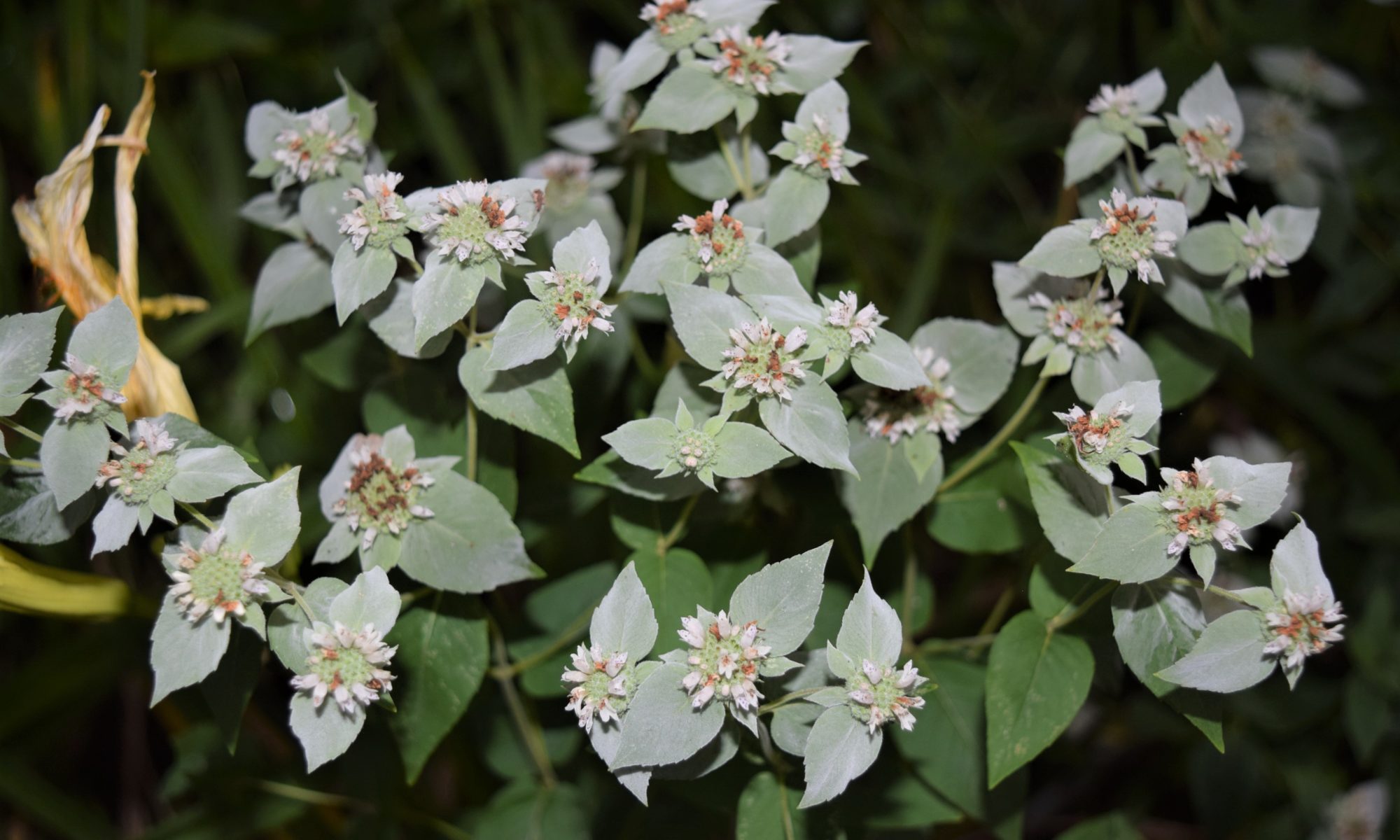
UT Gardens’ July Plant of the Month
Submitted by Janet Dowlen, Soil Conservationist, Cumberland County Soil and Water Conservation District and USDA/Natural Resources Conservation Service
The words “Mountain Mint” evoke cooling thoughts of the Smoky Mountains, paired with a refreshing natural aroma. It should not conjure up the horrors that true mints (Mentha sp.) may give you! The native mountain mint species are not at all like their unruly mint family cousins because while they are spreaders they are not aggressively so and can be controlled by mowing or otherwise controlling the clump. They are very underappreciated and underplanted in our gardens.
There are several species of mountain mint in Tennessee (primarily Middle and East Tennessee), and all are valuable nectaring species for pollinator insects. The Latin genus Pycnanthemum means “densely flowered,” an apt name for any of the native mint species you will find growing wild in Tennessee. They are more closely related to Monarda (bee balm) species than true mints.
Two of the most common species are Clustered Mountain Mint (Pycnanthemum muticum) and Southern Mountain Mint (Pycnanthemum pycnanthemoides). They can be seen at the UT Gardens, Crossville, in the native plant garden, in Jackson growing in containers near the building’s entrance, and at UT Gardens Knoxville in the Monarch Waystation and Kitchen Garden.
These can be difficult to identify down to the species at first glance, because both have similar height and foliage. The silvery-white bracts at the top of the plant make them look like they have been dusted with snow. They really are unmistakable when seen in midsummer. You can also hear the insects buzzing when they are in bloom. An incredible number of bees, butterflies, flies, beetles and even wasps use mountain mint as a nectar source. Surprisingly, these mints are not generally a larval host for insect species, as they contain a substance called pulegone, which is a natural insecticide. Due to this, these mints are not recommended for culinary use.
Depending on where you live, you may also see Narrow-leaved Mountain Mint (Pycnanthemum tenuifolium). The delicate, thin green leaves make it look like an entirely different plant until it flowers, and then the round, flat-topped flower heads give it away. It does not have white bracts of the other species and is considerably less fragrant.
Besides being a good plant for pollinator insects and providing an approximately three-month season of bloom, mountain mints can be a great plant for weed suppression and erosion control. They can be allowed to naturalize in spaces to crowd out weeds. They tolerate a wide range of soil and light conditions but prefer moist well-drained soils in full sun. Another bonus of the scented leaves is that they are not eaten by deer.
Overall, these wonderful native plants are not used enough in Tennessee gardens! But they are easy to start from seed, are readily divided and available at native plant nurseries. Find a neighbor with some! It’s a great pass-along plant.
The UT Gardens includes plant collections located in Knoxville, Crossville and Jackson, Tennessee. Designated as the official botanical garden for the State of Tennessee, the UT Gardens are part of the UT Institute of Agriculture. The Gardens’ mission is to foster appreciation, education and stewardship of plants through garden displays, educational programs and research trials. The Gardens are open during all seasons and free to the public.
For questions or comments please contact: utgardens@utk.edu